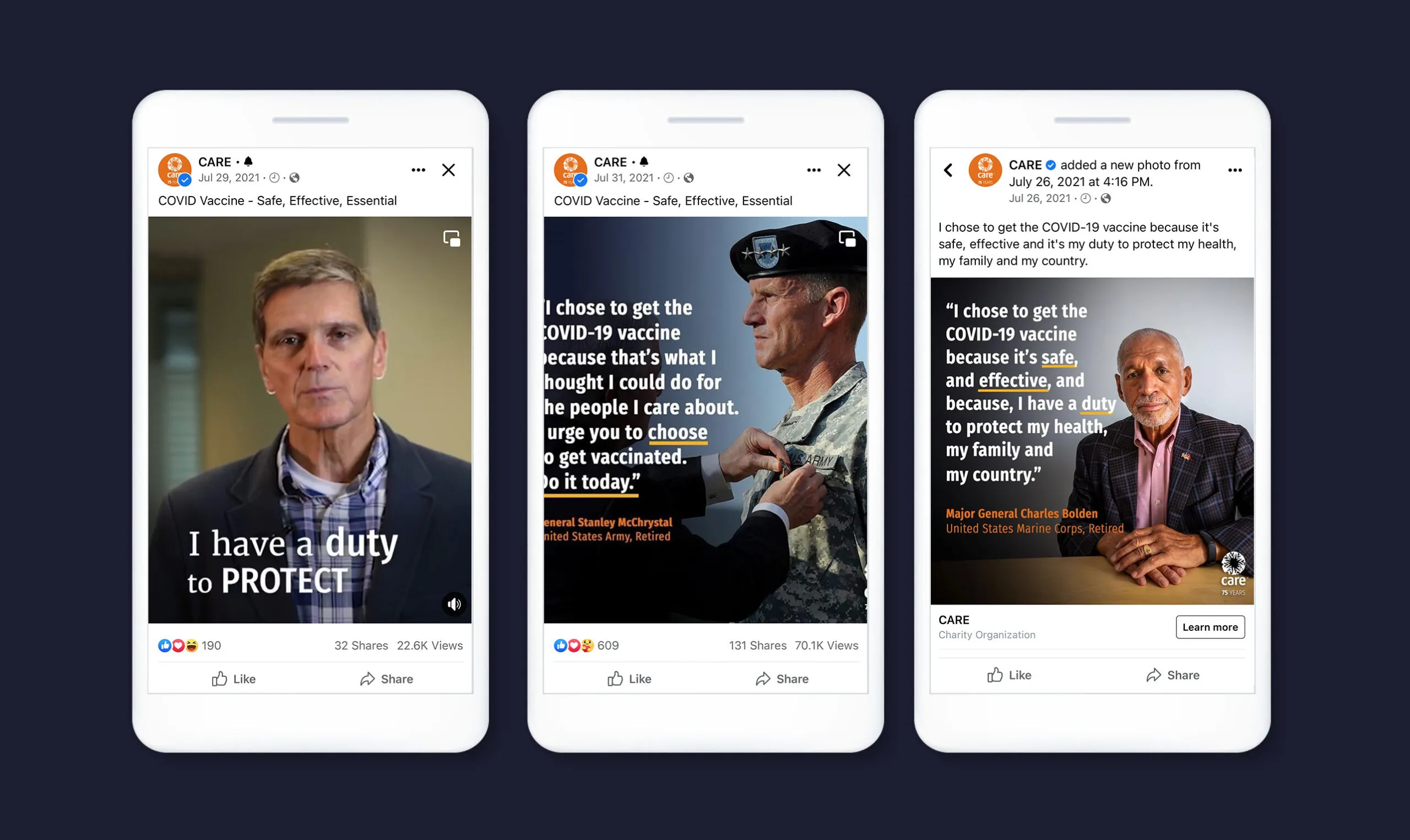The TL;DR Summary of Our Latest Myth-Busting Campaign?
- Surprisingly, women (vs. men) converted at an astounding rate. Of the women that went to the landing page, 18% clicked to register for a vaccine, 800% above the campaign average
- Based on both the marketing and brand lift study results, we believe that a mix of static and short videos was a winning combination
- Our myth-busting campaign was well, just that – a bust. Scroll to the end to learn why.
What do Veterans, women impacted by COVID-19, and emojis have in common? Nothing! That was exactly the point.
Throughout 2021 and through its partnership with Meta, formerly Facebook, CARE USA worked on decreasing vaccine hesitancy by designing and running social and behavioral change communications (SBCC) campaigns on Facebook and Instagram. Incorporating learnings from campaigns that ran during the first half of the year, CARE ran two social and behavioral change communications (SBCC) campaigns on social media, one featuring distinguished U.S. Veterans as trusted messengers and a second featuring content that dispelled common myths about the vaccines. We wanted to discover which approach would drive a higher increase in belief that the COVID vaccines were safe and that getting vaccinated was important.
Context
From September to December 2021, the Delta variant was rampant and COVID cases continued to spike, particularly amongst unvaccinated populations. Despite Food and Drug Administration (FDA) approval of the Pfizer Vaccine on August 23, only 30% of the target audience for the SBCC campaign thought that the COVID vaccine was safe and that getting vaccinated was important. Therefore, we knew that our messaging and continued partnership with Meta was of the utmost importance.
Veterans Campaign
The first test in this series launched September 2 and ran through October 4, 2021. It featured seven decorated Veterans: Admiral William H. McRaven, General Stanley A. McChrystal, Admiral Michael Mullen, General Joseph Votel, Major General Charles Bolden, Admiral Cecil Haney, and Captain Florent Groberg. Each Veteran’s ad included messaging about the safety and effectiveness of the COVID-19 vaccines and personal statements about why each of them chose to get the vaccine to protect their health, families, and country. The ads emphasized their choice to get vaccinated demonstrating values of freedom, liberty, strength, and duty – all themes that we anticipated would resonate with our target audience based on insights from the UNICEF Vaccine Messaging Guide.
The campaign included three creative approaches – long video (over one minute), short video (approximately thirty seconds) and a static image. In addition to testing a new type of trusted messenger, we wanted to understand whether a specific creative format drove more impact than another.

